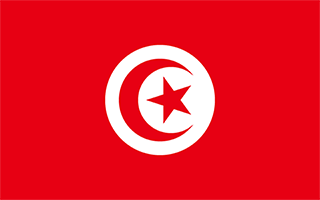Facts and Data
Webpages:
Official Unesco Page
Places to go: Dougga, Tunisia (Tunisian National Tourism Office)
Dougga. Roman ruins (Miftah Shamali)
Basis Data:
Unesco World heritage since: 1997
Size of heritage: 70 ha
- Buffer zone: 80 ha
Coordinates:
Longitude: 9,220°
Latitude: 36,424°
Summary
Before the Roman annexation of Numidia, the town of Thugga, built on an elevated site overlooking a fertile plain, was the capital of an important Libyco-Punic state. It flourished under Roman and Byzantine rule, but declined in the Islamic period. The impressive ruins that are visible today give some idea of the resources of a small Roman town on the fringes of the empire.
Location on Map
Show bigger map on Openstreetmap
Dougga / Thugga: A Glimpse into Ancient Roman Civilization in Tunisia
Dougga, also known as Thugga, is a UNESCO World Heritage site located in the Gouvernat de Beja region of Tunisia. This archaeological site offers a fascinating glimpse into the ancient Roman civilization that once thrived in North Africa. With its well-preserved ruins and historical significance, Dougga is a must-visit destination for history enthusiasts and travelers alike.
History
Dougga was originally founded as a Numidian settlement in the 6th century BCE. However, it was during the Roman period that the city flourished and became an important regional center. Under Roman rule, Dougga experienced a period of prosperity and growth, with the construction of impressive public buildings, temples, and theaters.
During the 2nd and 3rd centuries CE, Dougga reached its peak as a thriving city. It became an important administrative and economic hub, known for its agricultural production and trade. The city's strategic location on the crossroads of major trade routes contributed to its prosperity.
However, with the decline of the Roman Empire, Dougga gradually lost its significance and fell into decline. It was abandoned and eventually forgotten, buried under layers of sand and vegetation. It wasn't until the 19th century that the site was rediscovered and excavations began.
Current State
Today, Dougga stands as one of the best-preserved Roman archaeological sites in North Africa. Its well-preserved ruins offer a unique insight into the daily life, architecture, and urban planning of the ancient Roman civilization.
One of the most impressive structures in Dougga is the Capitol, a temple dedicated to the Roman gods Jupiter, Juno, and Minerva. The Capitol is adorned with intricate carvings and statues, showcasing the architectural prowess of the Romans. The nearby theater, with its stunning views of the surrounding countryside, is another highlight of the site.
The archaeological site of Dougga covers an extensive area, and visitors can explore the remains of various public buildings, including a market, baths, and a triumphal arch. The well-preserved residential quarters provide a glimpse into the daily lives of the city's inhabitants.
Efforts have been made to preserve and protect the site, including the establishment of a museum that houses artifacts found during excavations. The museum provides additional context and information about the history and significance of Dougga.
Visiting Dougga is like stepping back in time, as the site offers a serene and immersive experience. The picturesque landscape surrounding the ruins adds to the charm of the place, making it a popular destination for both history enthusiasts and nature lovers.
In conclusion, Dougga / Thugga is a UNESCO World Heritage site that showcases the rich history and architectural achievements of the ancient Roman civilization in Tunisia. With its well-preserved ruins and extensive archaeological remains, Dougga offers visitors a unique opportunity to explore and appreciate the legacy of this once-thriving city.
